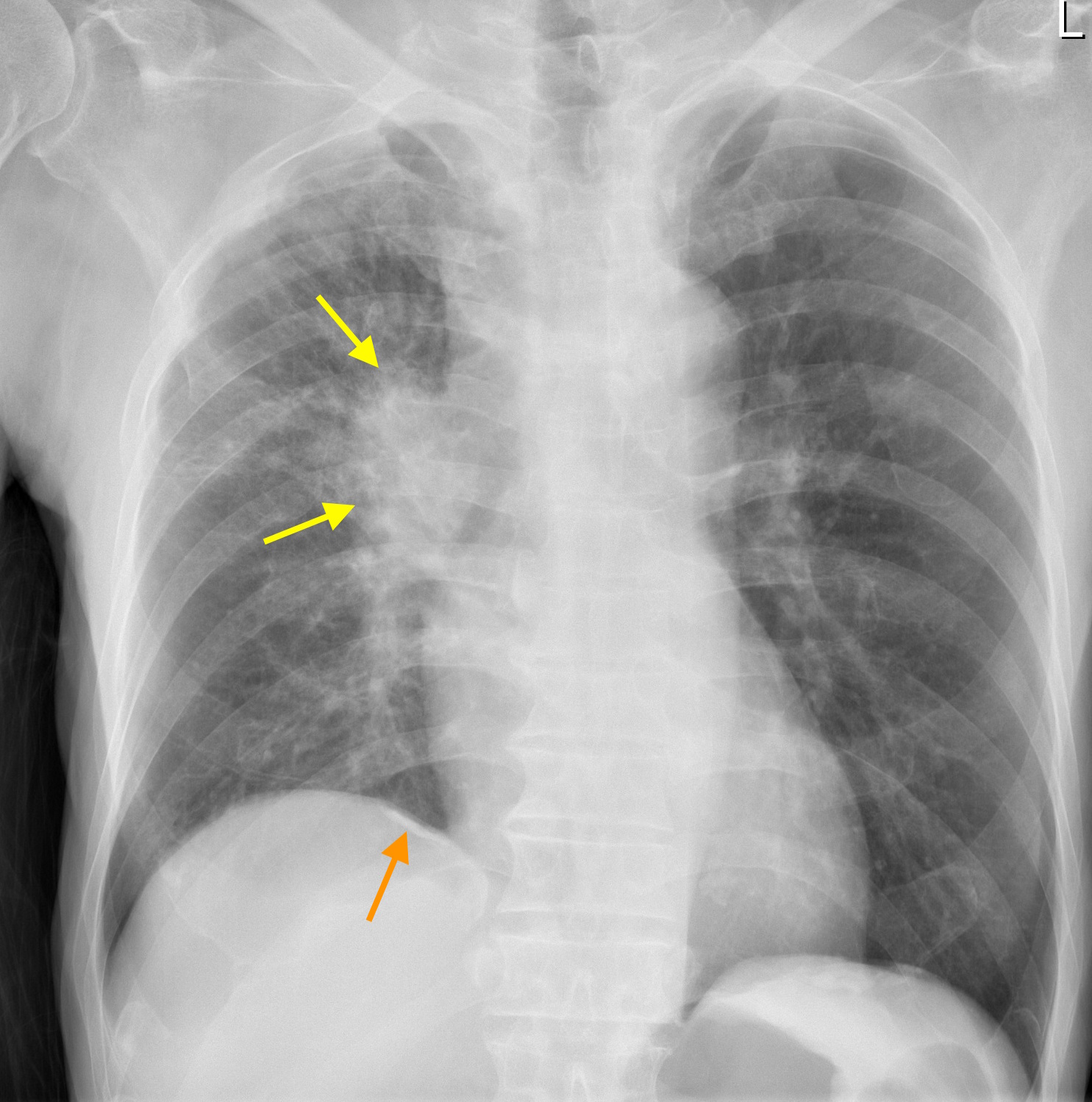

Nuclear lung scanning Radionuclide Scanning In radionuclide scanning, radionuclides are used to produce images. In this case, the ultrasound probe is located on the bronchoscope to obtain images from inside the airways. read more to help guide doctors when they need to obtain a sample of lung tissue to look for cancer ( needle biopsy Needle Biopsy of the Pleura or Lung A needle biopsy is a procedure in which a biopsy needle is inserted into the lung or through the membrane surrounding the lung (pleura) and is used to remove a piece of tissue for examination. A bronchoscope has a camera at the end that allows a doctor to look. Endobronchial ultrasonography (EBUS) can be used together with bronchoscopy Bronchoscopy Bronchoscopy is a direct visual examination of the voice box (larynx) and airways through a viewing tube (a bronchoscope). Bedside ultrasonography is sometimes done to diagnose pneumothorax Pneumothorax A pneumothorax is the presence of air between the two layers of pleura (thin, transparent, two-layered membrane that covers the lungs and also lines the inside of the chest wall), resulting. Ultrasonography can also be used for guidance when using a needle to remove the fluid. Ultrasonography is often used to detect fluid in the pleural space (the space between the two layers of pleura covering the lung and inner chest wall).

read more creates a picture from the reflection of sound waves in the body. A device called a transducer converts electrical current into sound waves. Ultrasonography Ultrasonography Ultrasonography uses high-frequency sound (ultrasound) waves to produce images of internal organs and other tissues. Contrast agents include Radiopaque contrast agents. However, CT angiography may not be possible if a person has kidney disease, which can be worsened by the contrast agents, or allergies to the contrast agents Allergic-type contrast reactions During imaging tests, contrast agents may be used to distinguish one tissue or structure from its surroundings or to provide greater detail. Currently, CT angiography is usually done instead of nuclear lung scanning to diagnose blood clots in the pulmonary artery ( pulmonary embolism Pulmonary Embolism (PE) Pulmonary embolism is the blocking of an artery of the lung (pulmonary artery) by a collection of solid material brought through the bloodstream (embolus)-usually a blood clot (thrombus) or. read more uses a radiopaque contrast agent injected into an arm vein to produce images of blood vessels, including the artery that carries blood from the heart to the lungs (pulmonary artery). In modern scanners, the x-ray detector usually. Sometimes, CT images are obtained after people both inhale and exhale to better look at small airways.ĬT angiography CT angiography In computed tomography (CT), which used to be called computed axial tomography (CAT), an x-ray source and x-ray detector rotate around a person. Generally, CT scans are done after a person takes a deep breath (inhales). Helical CT can provide three-dimensional images. High-resolution CT may reveal more detail about lung disorders. High-resolution CT and helical (spiral) CT are more specialized CT procedures.

During CT, a substance that can be seen on x-rays (called a radiopaque contrast agent) may be injected into the bloodstream or given by mouth to help clarify certain abnormalities in the chest.
#Asbestos exposure x ray pictures series#
With CT, a series of x-rays is analyzed by a computer, which then provides several views in different planes, such as longitudinal and cross-sectional views. read more (CT) of the chest provides more detail than a plain x-ray. Computed tomography Computed Tomography (CT) In computed tomography (CT), which used to be called computed axial tomography (CAT), an x-ray source and x-ray detector rotate around a person.


 0 kommentar(er)
0 kommentar(er)
